Reticulated Python (Python reticulatus)
Here on this reticulated python care sheet we will detail the needs of your new or future pet snake. We will give in detail all your needs.

Support the breeder click here and buy this snake!
Reticulated Python Care Sheet
The reticulated python also known as the “retic”. The retic has long drawn it’s fans! With its large, muscular build, lovely radiance and the beautiful patterned skin for which it is named. Long thought of as an aggressive, crabby snake. Because of captive breeding it has a name for an easily cared for, highly intelligent and rewarding captive pet.
The retic has a wide range in Southeast Asia. With most snakes kept as pets originating from Indonesia and Malaysia. Different populations are highly variable and have been divided into separate subspecies. With more to come as further research is conducted.
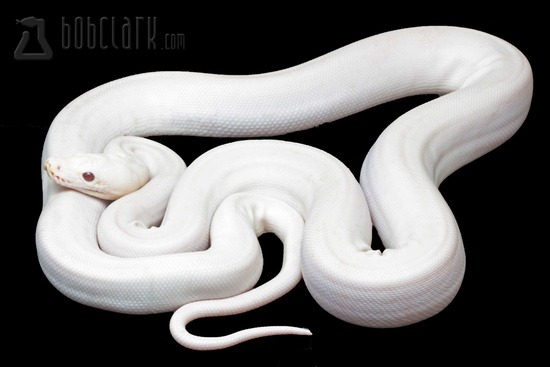
Support the breeder click here and buy this snake!
Retic Availability
Both imported and captive-bred retics are easily available year round. Fresh imports are very cheap. But they often carry heavy parasite loads and can have a difficult time adjusting to captivity.
Because of large clutch sizes produced by captive breeders, there are plenty of healthy retic hatchlings available. Which tend to have better humor as well, so there is really no need to buy wild caught animals.
Because of the vast variety in adult sizes, humor and coloration, make sure you are buying from a good breeder. That can provide detailed information on the individual animals you are thinking of purchasing. These can be typically found at reptile shows or online reptile shops. Please, always be liable! And never release an animal on purpose, or take it into a setting where it may escape into the wild.

Support the breeder click here and buy this snake!
Retic Adult Size
Mainland retics are one of the world’s largest snakes. With rare examples being recorded at 32 feet long and weighing in at 350 pounds. These specimens are unique and very rare. With the average adult size staying between 10 to 20 feet long. On the other hand, several wild populations of retics reach much smaller adult sizes than the “mainland” varieties. These “dwarf” retics max out at 10 to 12 feet. There are also “super dwarf” retics that appear to max out at 6 to 8 feet in length.
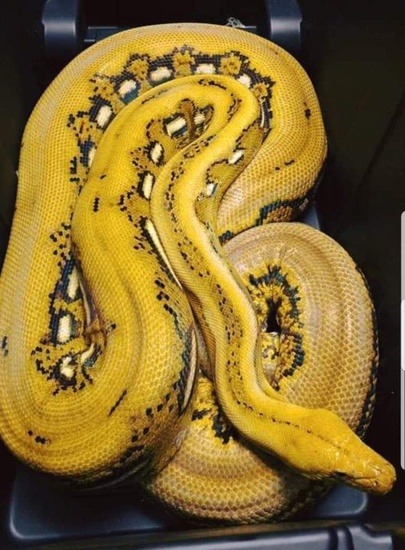
Support the breeder click here and buy this snake!
Retic Lifespan
On average, retics live 15 to 20 years. With some individual snakes reaching 25 or even 30 years of age.
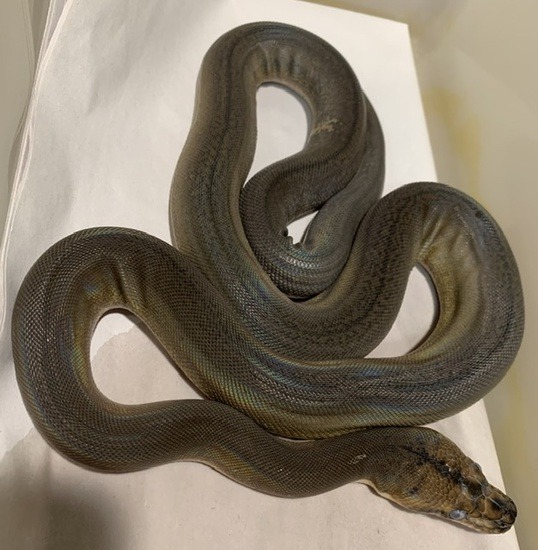
Support the breeder click here and buy this snake!
Retic Caging
The most important aspect of this reptile habitat is that it must safely contain the snake. Tight-fitting racks or strong cages with locks are a must. Baby reticulated pythons can be kept in shoebox-sized cages or 10-gallon reptile terrariums. Adult reticulated pythons can be housed in 2-foot-tall by 3-foot-wide by 6- to 8-foot-long cages. Occasional larger snakes may require a 3-foot-tall by 4-foot-wide by 10-foot-long enclosure.
Custom-built cages should be constructed of strong, waterproof materials for ease of cleaning. Using quality reptile cleaning supplies is important for your pet’s health! Reptile hides are a fundamental snake habitat product. Which are particularly effective for juvenile retics. We recommend something tight fitting but with an entrance large enough for the animal to enter and exit easily.
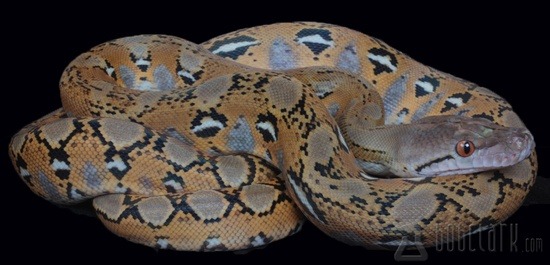
Support the breeder click here and buy this snake!
Retic Snake Substrate
Using printed newspaper and plain newsprint will give great success. Other options include aspen, cypress mulch, coco husk or pre-cut corrugated cardboard. Check daily for excrement or other leavings and replace substrate accordingly. You can use cleaning products like the Zoo Med Wipe out Cage Cleaner, or F10 disinfectant.

Support the breeder click here and buy this snake!
Retic Heating & Lighting
A variety of options exist for snake heating retics. Such as heat pads, spot lamps, but always use a cage guard to prevent injury, heat tape and heat panels. A high-quality thermostat is always worth the money to ensure that you are providing the proper options for healthy temperature. Temperatures should range from 76 degrees Fahrenheit on the cool side to 92 degrees as a hotspot.

Support the breeder click here and buy this snake!
Retic Food
Retics are extremely food-oriented, and they love to eat! Most retics start off taking live reptile food. But a fair amount can be transferred over to frozen/thawed prey items, or freshly killed prey items. If your retic is not willing to take frozen/thawed food at first. Offer it occasionally and the snake may begin to accept it eventually. Not all retics will switch to dead food. However some will require live food as a permanent food source.
A good rule of thumb is to feed one prey item. With comparable girth to the thickest part of the snake’s body, every seven to 10 days. Retics fed more often will grow faster and can reach greater lengths. But over feeding snakes can cause health problems, as with any animal.
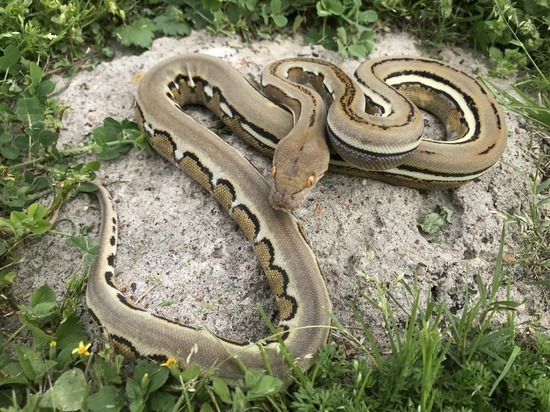
Support the breeder click here and buy this snake!
Retic Water
A large water dish should be available at all times. Constructed of dishwasher-safe or easily sanitized materials. And it should be heavy enough to not be easily tipped over. The water dish does not need to be large enough for your snake to soak in. Soaking retics for a few hours in a separate container or a bathtub will ease the removal of shed skin.
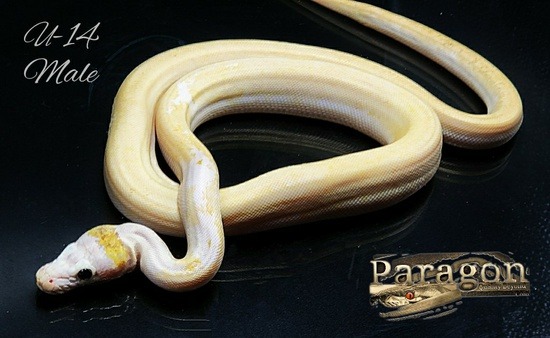
Support the breeder click here and buy this snake!
Retic Handling and Temperament
Baby retics can be nervous. Having giant predatory animals (such as humans) around them all the time. And may hiss or even strike, but with gentle daily handling, they become quite confident.
Acclimated retics have a strong feeding response. So expect that whenever you open the cage they will be interested in food. Everyone handles things differently, but the basic idea is the same. Before you reach toward your snake with your hand, show the snake that it’s not being fed.
Use a paper towel roll, which will not hurt the snake’s teeth if it bites it. Pet the snake on top of its head until it moves away. This means it is no longer looking for a target to strike at and eat. Once this happens, we simply pick the snake up by hand. Once they’re out of their cages, our retics are usually very receptive to handling. When dealing with any large snake, it is wise to have a second experienced handler present. And keep the animal’s head pointed away from you and others at all times. Especially if you’re handling an easily spooked animal.
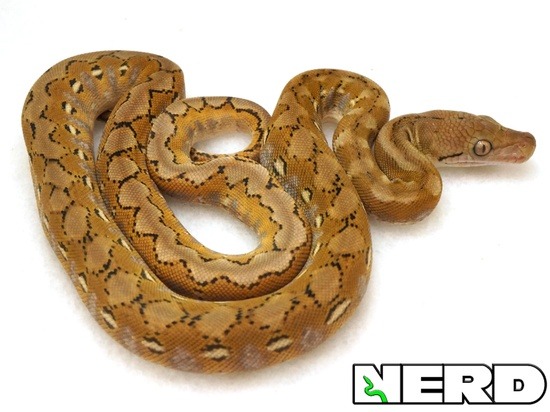
Support the breeder click here and buy this snake!
Dwarf Retics
Several locality-specific Dwarf retics have popped up on the breeding scene. Offering an exciting chance to breed the designer morphs in a smaller size for easier keeping by most fans. The resulting Dwarf morphs are incredible. There are different varieties of Dwarf reticulated pythons that attain differing adult sizes. Ranging from the smallest (called Super Dwarfs) that reach sizes of only 6 to 8 feet, for example. While others max out at 10 to 12 feet.
Are you considering purchasing a Dwarf retic? It is important to know what kind of Dwarf it is. And what percentage of Dwarf blood it has in order to estimate its eventual adult size. The reptile trade dictate that a retic must have at least 50-percent Dwarf blood to be labeled a Dwarf. Generally, the higher percentage Dwarf blood, the more expensive the snake.
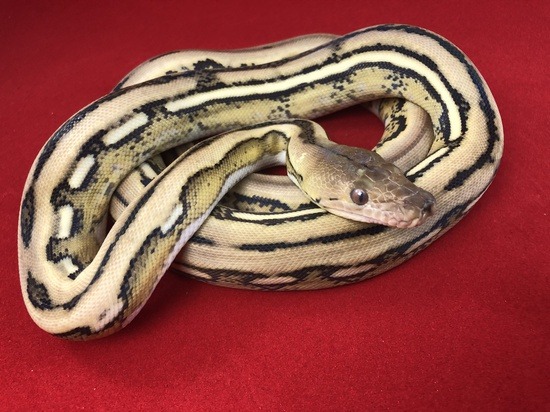
Support the breeder click here and buy this snake!
Retic Designer Morphs
There are a number of new and established retic color and pattern mutations. Some of these include Sunfire, Titanium, Clown and Albino, which when combined create “designer retics,”. The designer morphs do not exist in the wild, but are some of the most beautiful animals in the world.
This natural variety, along with numerous genetic morphs, allow for selective breeding and domestication to occur rapidly. And the last 20 years has seen the Retic become available in over 200 different varieties! Before you buy your new pet do your homework, buy captive-bred snakes, and have fun with your new retic!
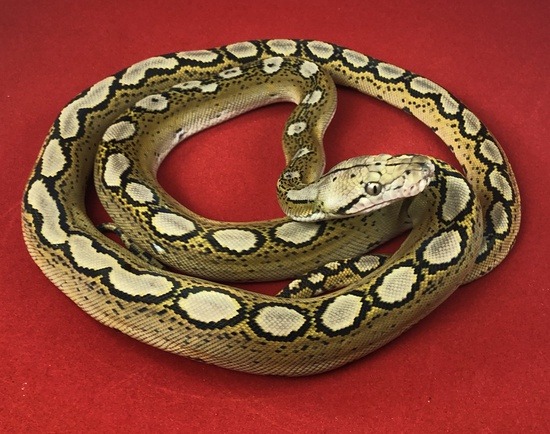
Support the breeder click here and buy this snake!
Reticulated Python Care Sheet Conclusion
This reticulated python care sheet will give you the correct path to a happy healthy snake. Take a gander at our shopping list for more insight into your needs. Retics make great companions. Enjoy your new pet!
Want to Support our efforts? Donate! fan funding is our main source of income! Thank you!
Become a Patron!
 Buy me a coffee
Buy me a coffee

Support Our Breeding operation Click Here For Our Go Fund Me!
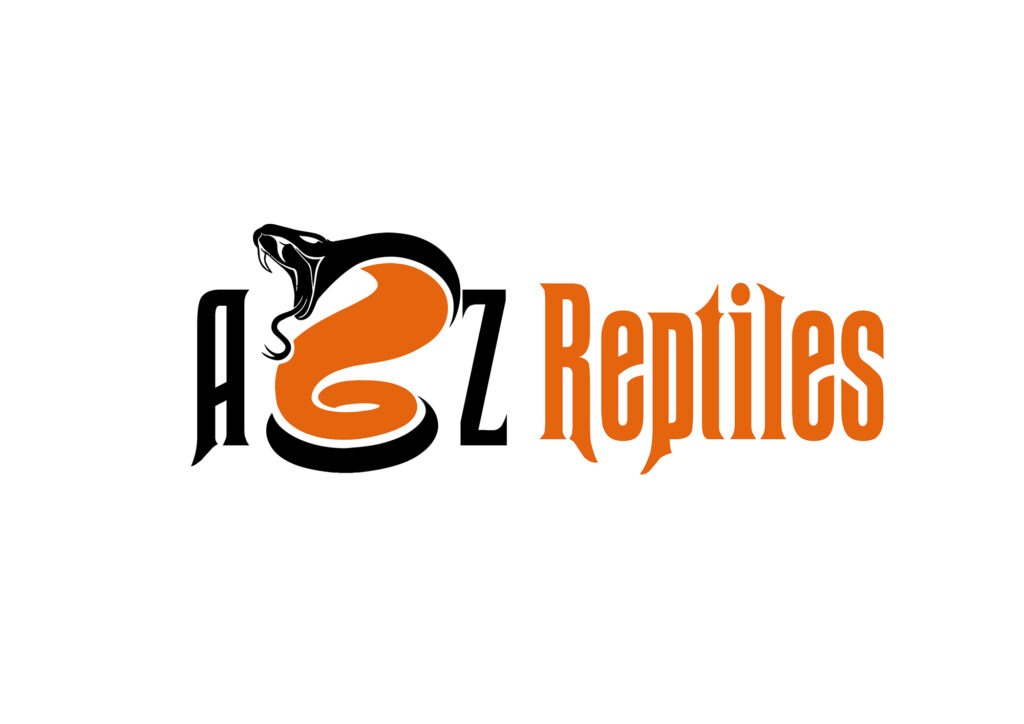

This is the link to click for a reptile or a frog! Check out this article! Click Here!
Get A Baby Tortoise! Check out This article! Click Here!
Ball Python Care Guide CLICK HERE!
Ball Python Habitat Guide!
Bearded Dragon Care Sheet!
Blue-tongue Skink CARE SHEET!
CARE SHEET FOR RED-TAIL BOA!
Reticulated Python Care Sheet!
Savannah Monitor Care Sheet!
Glass Cages!
Animal Plastics!
Custom Cages!
ARS Caging!
Custom Reptile Habitats!